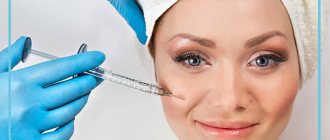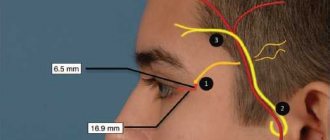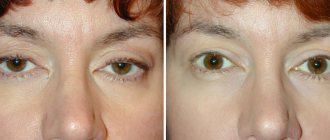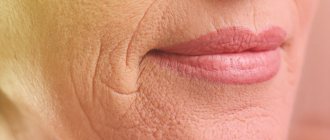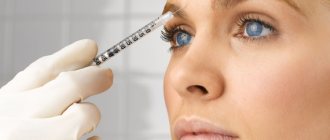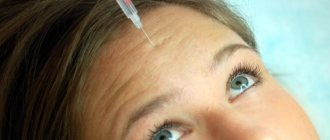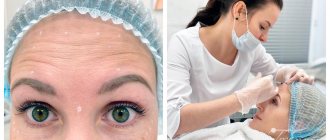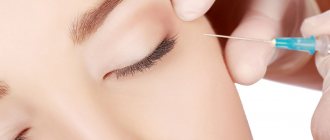The famous Botox is a sweet poison, a sure salvation from wrinkles . Why does it sometimes disappoint us, not meeting expectations and even adding aesthetic shortcomings? There are many reasons for this. The magazine “Beauty and Health” discussed the main ones with our permanent expert, cosmetologist Aisulu Tokaeva.
In order to eliminate facial wrinkles, botulinum therapy - the well-known Botox injections - has been used in aesthetic cosmetology for more than 20 years. The first report on the use of the botulinum neurotoxin type A drug Botox (“Botox”) for the correction of glabellar wrinkles was made in 1991 at the International Conference of the American Academy of Dermatology. Since then, the product, whose name has become a household name, has had “colleagues”: Dysport (“Dysport”) produced in France; Heomin (“Xeomin”) - Germany; Lantox (“Lantoks”) - China; Relatox ("Relatox"), Botulax ("Botulax") - Russia.
Let us recall the mechanism of action of botulinum toxin injections: long-term (for several months) and reversible (over time, the “disabled” function is restored) muscle relaxation - that is, relaxation of the muscle involved in facial expressions as a result of blockade of the neuromuscular transmission (transmission) of acetylcholine (a biologically active substance neurotransmitter, transmitter of nervous excitation) in the cholinergic (acetylcholine-sensitive) terminals (“processes”) of motor neurons (cells of the nervous system).
Botulinum therapy is not only the most popular, but also perhaps the most studied cosmetology technique. Clinical data accumulated over years of practice prove its high effectiveness and relative safety.
Incorrect dosages and medications
Most often, this situation occurs in small salons and private beauty salons, which, in pursuit of profit, use drugs in minimal dosages. Here, everyone is often injected with the same drug in the same dose, which is unacceptable.
There are softer and harder options for drugs based on botulinum toxin. The choice depends on how often the injections are given and at what previous dosage the injections were given. The dose also depends on age and skin characteristics.
The strength of the drug is influenced by the features of facial architectonics. For example, with a heavy forehead, low eyebrows, a large amount of skin on the upper and lower eyelids, a wide bridge of the nose, and a tendency to swelling, you need to increase the dose. But only an experienced cosmetologist knows how much to increase it. Therefore, Botox often does not work for such facial features.
“Botox parties” have become fashionable, for which doctors buy botulinum toxin in bulk and arrange a meeting for people who want to get injections. Such events are common in Western countries, especially in the United States.
Here's how a party usually works - a group of men and women of different ages mingle in a common area. Snacks are sometimes served. One after another they go into the room for 15 minutes. There, payment is taken and an informed consent agreement is signed. After this, injections are given and the participants rejoin the group. You can’t expect any miracles from such “wholesale cosmetology”.
Therefore, it is not worth doing Botox injections in questionable conditions, and especially at parties while abroad. The effect of such an event is low, and no one bears responsibility for the procedure.
Botox doesn't work - reasons
Expert opinion
Anna K Ovalchuk,
cosmetologist and esthetician at the Matilda beauty salon
Cosmetics with the Botox effect are, of course, not an alternative to botulinum toxin injections, but they can be used as an additional measure, a way to maintain the results of botulinum therapy.
Perhaps the only situation when such a non-invasive effect is sufficient to smooth out facial wrinkles is a very young age and not yet formed, transient wrinkles that arise as a result of emotional stress.
One of the main components of the corresponding products (these are not only creams, but also, for example, masks, which are also used in professional salon care) is argillerine. This is a biopeptide, which is a sequence of six amino acids and promotes moderate relaxation of facial muscles.
A comprehensive effect on the skin will help you get the most pronounced aesthetic result from this resource. It may include superficial peeling, deep moisturizing... That is, it is better to abandon the amateur use of botulinum-like products and seek competent assistance from a specialist.
Beauty injections done wrong
This happens when injections are performed by a cosmetologist without higher education and additional courses. Sometimes, in pursuit of profit, the procedure is performed by people without any medical education at all. Such would-be specialists do not know anatomy and inject all patients according to templates, forgetting that everyone has individual features of the structure of the face and body.
As a result, the drug is injected in the wrong place, and therefore does not work. Therefore, when choosing a clinic, you need to evaluate the cost of the service - too low a price should alert you.
How does Botox work?
According to the experience of cosmetologists, botulinum toxin injections as a cosmetic method for correcting wrinkles are effective and safe. And due to the fact that the result is achieved without effort on the part of the client and almost immediately, the procedure has become super popular.
The toxin does not change the structure of muscles or nerves in any way, it only blocks the neuromuscular transmission of impulses from the brain to the muscle, namely the neurotransmitter acetylcholine, which is a transmitter of nervous excitation, and the muscle relaxes. The result of the procedure is reversible, but long-term - it remains normal for several months. With an active lifestyle, which leads to an increase in blood circulation, the duration of action of the toxin is slightly reduced.
Is Botox addictive?
Cases of decreased effectiveness of botulinum toxin in cosmetology were studied back in 2003. Provided that previously performed procedures are successful, the secondary ineffectiveness of the toxin manifests itself in two ways:
- reducing the duration of the effect;
- reducing the severity of the result while maintaining the dosage.
According to observations, addiction develops due to:
- administration of significant doses of botulinum toxin - more than 250 units;
- administration of the drug in small doses, but with a short interval between injections - less than 2 weeks.
Cosmetologists note that addiction will not develop if Botox is administered no more than once every 6 months and the muscle is allowed to work in normal activity mode for at least a month, i.e. When does Botox stop working?
The body produces antibodies
In response to Botox, the immune system may produce antibodies, which subsequently reduce its effect.
This phenomenon is provoked by:
- Insufficient interval between injections
. After the procedure, the cosmetologist always tells you when the next time you need to inject the drug. In some cases, clients rush things and try to get into trouble faster. As a result, the body is overloaded with the drug and begins to resist, which leads to the formation of antibodies. Botox “doesn’t work” and patients lose money. - Exceeding dosages.
This happens with inexperienced doctors who cannot choose the right dose for the patient. This provokes addiction and the production of antibodies. In addition, excess medication can negatively affect the result, making the face unsightly - mask-like. - Post-existing botulism.
Botox and its analogues contain botulinum toxin. This poison occurs naturally, forming in improperly preserved mushrooms, cucumbers, canned food and artisanal sausages. If the patient has ever suffered such poisoning, it means that the body has already produced antibodies, and the injections will not work. This happens very rarely. Botulinum toxin poisoning is severe, it is treated in a hospital and patients are aware of the illness.
The most common reasons are
If after injections of Botox or its analogs there is no effect or is weakly expressed, then we are most likely talking about complete or partial denaturation of botulinum toxin molecules. This occurs due to violations of storage conditions before diluting the bottle with botulinum toxin, errors in diluting the drug, violation of the conditions of its storage and use after dilution. There are also particularly enterprising cosmetologists who simply charge 15-20% less units than what was paid by the client.
1) Violation of storage conditions (before dilution) –
Most botulinum toxin preparations are very sensitive to storage temperature. You can store undiluted botulinum toxins from any manufacturer (with the exception of Xeomin) either frozen in the freezer or in the refrigerator at a temperature of 2-8 degrees Celsius. And this storage regime cannot be violated from the moment the drug is packaged by the manufacturer until the drug is diluted with saline solution directly in a cosmetology clinic or beauty salon.
But imagine that somewhere during the transportation/storage stage the power supply is turned off, and the drug was first defrosted and then frozen again, or it simply lay overnight in a non-working refrigerator even without re-freezing. All this immediately leads to a decrease in the effectiveness (strength and duration of action) of the drug. The only botulinum toxin that can be stored at room temperature until diluted is the German drug Xeomin, which provides a guarantee against violations of storage conditions at least until the drug is diluted.
2) Errors when diluting the drug –
Botulinum toxin molecules are a very delicate substance that needs to be very carefully diluted with a solvent (saline). For example, if saline solution is introduced into the bottle too quickly, then during the dilution process many air bubbles and foam may form - which should not happen under any circumstances. Also, you should not shake the bottle, trying to dissolve the botulinum toxin crystals in the saline solution. Incorrect dilution and vigorous shaking of the solution lead to denaturation of botulinum toxin, i.e. to complete or partial loss of effectiveness.
3) Violation of storage conditions (after dilution) –
This is the most common violation. Any botulinum toxin after dilution should be used only within 24 hours, which is stated in black and white in the instructions for use for Botox, Xeomin, Dysport, etc. That is why, in clinics that value their patients, botulinum toxin injections are carried out on special “Botox days”. For example, a patient came to you, and in front of him you diluted a bottle of Botox 100 units. You will only give this patient 25-35 units, but the rest should only be used within 24 hours.
The next patient may come only in 2-3 days or a week, and it turns out that the remainder of the diluted drug will need to be thrown away. That is why the clinic collects several patients, and when they have the required number, they call them and invite them to a certain day. It usually happens quite differently in beauty salons, where most often they work not with dermatologists or cosmetologists with higher medical education, but with ordinary nurses with advanced training in “nursing in cosmetology.”
In beauty salons, in order not to lose clients, they are not prescribed on special days, but injections are given immediately. How does this happen. The cosmetologist dilutes a bottle of Botox with 100 units, and this fresh solution is given only to the first patient (for example, 30 units), and the remaining 70 units of the drug solution are consumed as follows. The first option is to put the bottle of diluted botulinum toxin back into the refrigerator, where it can stand for 2-3-4 weeks until the cosmetologist uses it completely. Naturally, the strength and duration of action of botulinum toxin will be lower the longer the bottle of the diluted drug sits in the refrigerator. Let us remind you that it can stand for 24 hours, after which it must be thrown away.
The second option is to take the remaining 70 units into several syringes (say 30 units + 20 units + 20 units), and these syringes are placed in the freezer. And when the patient arrives, the syringe is removed from the freezer. Considering the small volume of the solution, only 5-10 minutes are enough to defrost it. But the whole point is that diluted solutions cannot be re-frozen, because... ice crystals mechanically destroy botulinum toxin molecules. In clinical studies with Gartlan MG and Hoffman HT, it was shown that after repeated freezing and thawing, at least 69.8% of botulinum toxin molecules lose their activity.
4) Deception with dilution of the drug -
Let us explain using the example of the drug Botox. If a bottle of Botox® 100 units is diluted with 2.0 ml of saline solution, in this case there will be 5 units in 0.1 ml of solution. If 2.5 ml of saline solution is used for dilution, 0.1 ml will contain 4 units of botulinum toxin. But imagine that the cosmetologist specifically used 1.0 ml more saline solution for dilution than needed, so that in each 0.1 ml injected into you there would be several units of Botox less. The units of the drug saved from such manipulation will be supplied for money to another patient.
5) Illegal Botox injections in beauty salons –
We have already said above that botulinum toxin injections cannot be administered by nursing staff, although in beauty salons, “cosmetologists” are predominantly nurses who have undergone advanced training in “nursing in cosmetology.” Moreover, such a certificate also does not give them the right to inject botulinum toxin, and for this they need to undergo special training. But the fact is that according to the law, only doctors can teach botulinum therapy, i.e. specialists with higher medical education.
You can easily check the last statement by trying to enroll in a course on botulinum therapy, for example, at the Department of Additional Professional Education at Moscow State Medical University named after. Sechenov or MIEM. But in small private offices, in an effort to make money from training, they even teach nurses illegally, giving them commercial certificates that do not give them any right to carry out additional professional activities. Having completed such 1-2 day courses, without properly knowing either the anatomy of the facial muscles or the exit of nerve trunks and blood vessels, they begin to inject Botox.
A common mistake of such specialists is that they do not know the location of the muscles well and do not always make injections at the right points. In addition, they are simply afraid to inject and often inject too superficially - sometimes not even into the muscles, but into the deep layers of the dermis. Of course, such specialists can say that the solution has diffusion (i.e., the property of spreading in tissues), and it will reach where it is needed. This is partly true, but the muscles are surrounded by fascia, through which solutions diffuse poorly. This is if the solution is injected deep into the muscle - it will have good diffusion along the muscle, but not otherwise.
Important: but poor knowledge of the facial muscles and injection techniques can lead not only to the lack of a good effect. The most serious complications with botulinum therapy relate to excessive relaxation of certain muscles, especially when you inject between the eyebrows or in the eye area. Frequent complications are diplopia (double vision), lagophthalmos, swelling of the eyelids, hernial protrusion of infraorbital fat pads. Other common complications are ptosis (drooping) of the upper eyelid, ptosis of the eyebrows.
Incorrect behavior after the procedure
In the first four hours after the injection, you should not touch the injection sites. You need to be in an upright position and work your facial muscles so that the drug spreads faster. In the first seven days you cannot play sports, visit the solarium, sauna, or bathhouse. Otherwise, the duration of the drugs will be reduced.
Botox is not compatible with physical and cosmetic procedures that increase muscle contraction and blood flow in the facial area. Against this background, you cannot take a number of medications, for example, some antibiotics. Therefore, you should inform your doctor about any injections performed. Then the doctor will select compatible drugs.
Conclusions -
Thus, the first thing you should do is understand which specialist you came to see and whether he has the right to perform botulinum toxin injections.
Secondly, you should be wary if the cosmetologist immediately suggested that you do botulinum toxin injections on this first visit, and not on the “Botox day”. This means that the drug has either already been diluted in advance, or the remainder of the drug will go to other gullible suckers. If the doctor took out a syringe that had already been drawn up in advance, and you did not see him drawing it from the bottle, this means that you have a re-frozen and thawed drug in front of you. Some patients, when you start telling them this, begin to very zealously defend such a specialist. It’s like nothing that the drug was diluted in advance, because Botox “got up” after that. But besides the fact that he “got up” or “didn’t get up”, there are other criteria, for example, the duration of action of the drug (24stoma.ru). In addition, this can have an impact on the development of resistance to botulinum toxins - lead to the production of so-called blocking antibodies by the immune system (and then gradually the botulinum toxins will no longer affect you at all). And lastly, this is the deliberate provision of obviously low-quality services.
As for comparing the effectiveness of different botulinum toxin preparations, as we showed above, there are many simultaneously influencing factors that patients are not even aware of. And these are not only different names of drugs and the number of units, but also the degree of dilution of the drug, the “freshness” of the solution, the correct injection technique, and, banally, the honesty of the cosmetologist.
How Botox should work: Before and After video
Botox is overrated
Some people think that injections will smooth out any wrinkles. In fact, this is not so - the injections lead to temporary paralysis of the muscles, so they actively work in the upper third of the face - in the area between the eyebrows, on the forehead, in the area of the nose and nasolabial fold. That is, the drug removes only dynamic wrinkles that occur during facial expressions, but does not remove static wrinkles that exist at rest.
Botox injections are a highly effective cosmetic procedure widely used throughout the world. But it will only help if it is done correctly, in the correct dosage and provided that the patient follows the doctor’s recommendations.
You can get beauty injections by contacting the Aesthetic Medicine Center. Experienced specialists work here who will select the correct drugs, dose and do everything to ensure maximum effectiveness of the procedure.
Resistance to Botox injections
The method is evolving. Some problems are being solved (for example, today soft correction can be provided without the effect of a “frozen” face), other imperatives, say, the possibility of working with the lower third of the face, are in the focus of attention.
Recently, the issue of resistance, or insensitivity,
to botulinum toxin injections: when the procedure is performed, but the result is absent or assessed as unsatisfactory.
There is a distinction between primary
(there is no result when the procedure is performed for the first time in life) and
secondary
(up to a certain time botulinum therapy brought the desired effect, but then stopped) insensitivity to botulinum toxin injections. Primary failure of botulinum therapy is extremely rare, and finding out its true causes is often very difficult. Failures after previously successful correction are more common.
